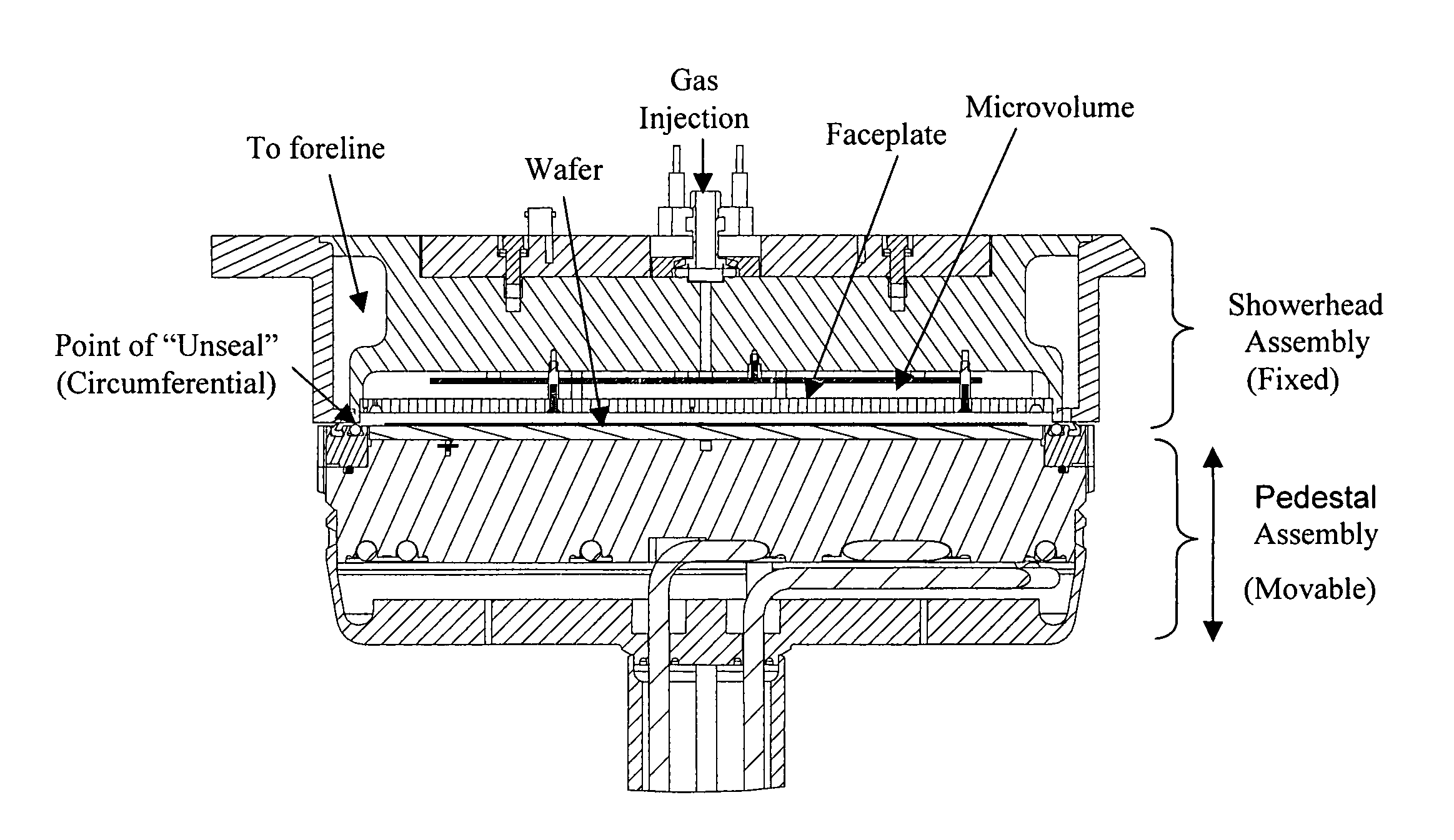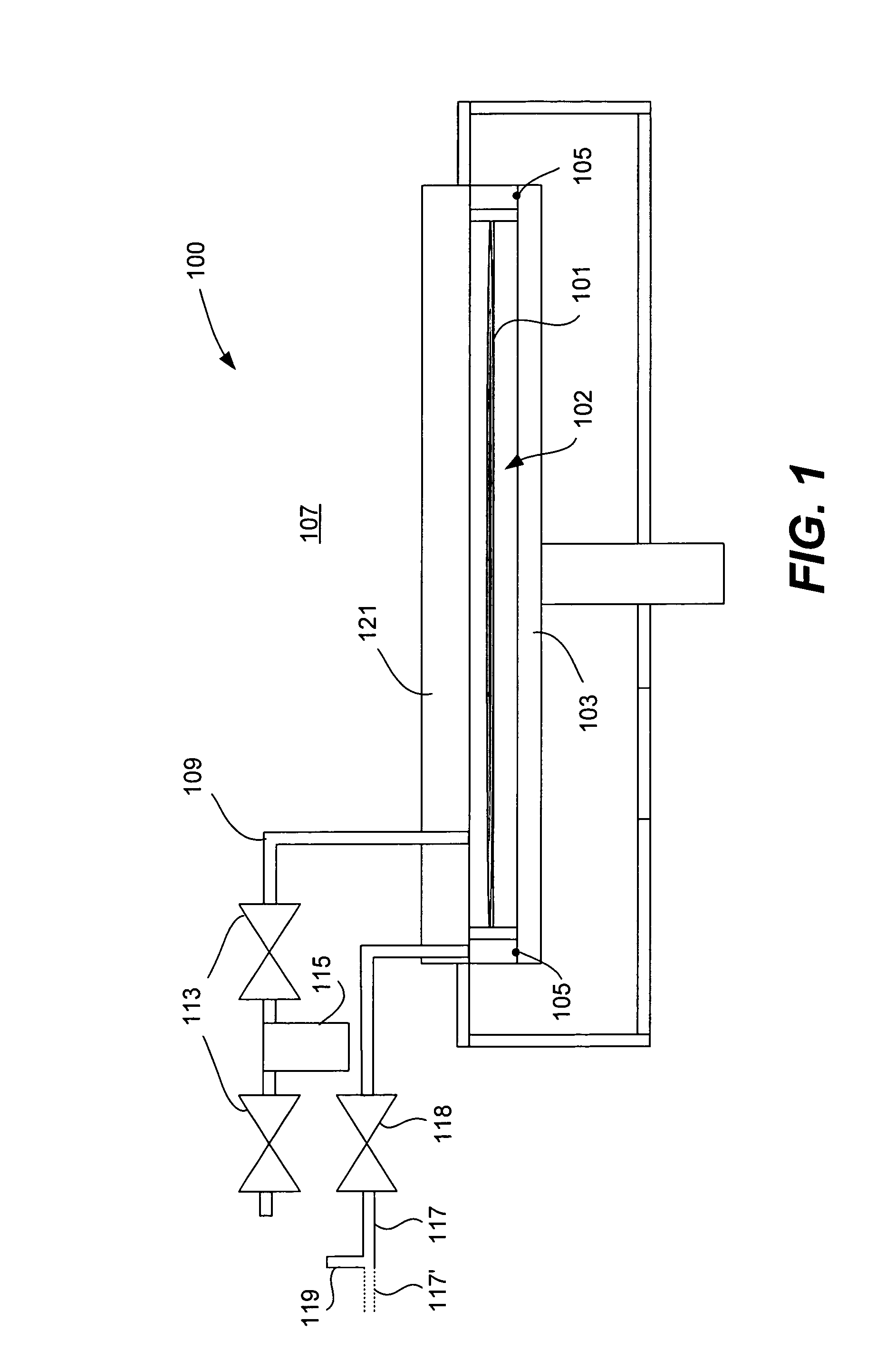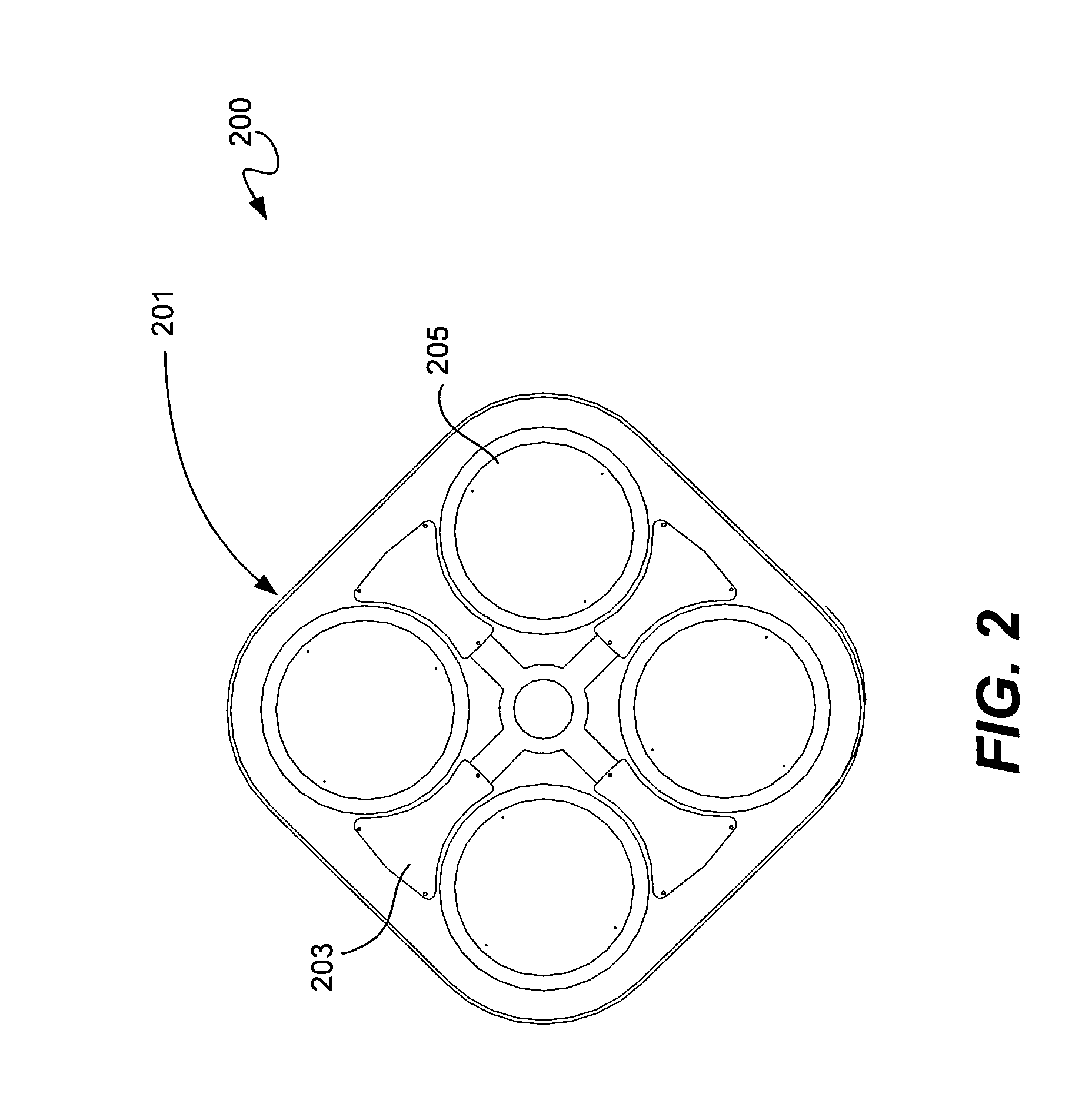Dual seal deposition process chamber and process
a technology of sealing process and process chamber, applied in the field of apparatus and processes, can solve the problems of reducing budget, void-free filling of high aspect ratio (ar) spaces (ar>3.0:1) becoming increasingly difficult, and shrinking dimensions
- Summary
- Abstract
- Description
- Claims
- Application Information
AI Technical Summary
Benefits of technology
Problems solved by technology
Method used
Image
Examples
embodiment 600
[0069]In a preferred implementation of the dual circumferential elastomeric seal embodiment described with reference to FIGS. 4A-C and 5, above, the elastomeric seals and their associated mounting features on the pedestal, for example, module have a particular geometry. An example of this embodiment 600 is shown in FIG. 6. The mounting features for both seals are circumferential channels 602, 604 in the surface of the pedestal 606 that will engage with the showerhead module 608 to form the deposition microvolume. The channel 602 for the outer seal is configured with a reentrant feature 612 on the lower portion of its outer wall, and the outer elastomeric seal 614 is a lip seal configured with a corresponding tab 616, so that the channel feature 612 and the tab 616 fit together in a lock-and-key manner. This configuration retains the elastomeric seal 614 in place, preventing it from popping out of the channel 602 when the lip seal is engaged. The upper portion of the inner wall can a...
embodiment 700
[0070]FIG. 7 illustrates an alternative embodiment 700 of the invention in which a seal element 702 that has sealing surfaces on its top 704 and bottom surfaces 706 and is mounted on a flexible element 708 can be used to form the inner and outer seals. The flexible element 708, which may be metal, plastic or another suitable material, is mounted to the showerhead module 710. This design allows the first seal (outer seal, between the microvolume and the main reactor chamber) to be made when the pedestal 712 contacts the bottom surface 706 of the sealing element 710. The second seal (inner seal) is made when the pedestal travel (and / or travel of the showerhead module relative to the pedestal) deflects the flexible element 708 allowing the top surface 704 of the seal element to contact the showerhead 710, sealing off the vacuum source 714. The latter (fully closed) position of the seal and flexible elements is represented by the broken line 715 in the figure. Given these specifications...
embodiment 800
[0071]According to a third alternative, illustrated in FIGS. 8A-B in lateral and vertical cross-sections, respectively, a plurality of discrete valves arranged peripherally around the microvolume can be used in combination with a circumferential elastomeric seal to form the inner and outer seals of the dual seal, respectively. In this embodiment 800, the inner seal, between the vacuum source and the deposition region of the microvolume, is created by a plurality of discrete vacuum channels and valves in the showerhead module 803 arranged peripherally around the deposition region of the microvolume (which, in operation, contains the wafer 804); and the outer seal, between the microvolume and the main reactor chamber, is formed by a concentric elastomeric seal 806, such as an O-ring seal, on the surface of the pedestal module 805. In operation, the discrete vacuum channel valves 802 of the inner seal open or close together to promote uniform gas flow across the wafer 804 and correspon...
PUM
| Property | Measurement | Unit |
|---|---|---|
| Temperature | aaaaa | aaaaa |
| Temperature | aaaaa | aaaaa |
| Pressure | aaaaa | aaaaa |
Abstract
Description
Claims
Application Information
 Login to View More
Login to View More - R&D
- Intellectual Property
- Life Sciences
- Materials
- Tech Scout
- Unparalleled Data Quality
- Higher Quality Content
- 60% Fewer Hallucinations
Browse by: Latest US Patents, China's latest patents, Technical Efficacy Thesaurus, Application Domain, Technology Topic, Popular Technical Reports.
© 2025 PatSnap. All rights reserved.Legal|Privacy policy|Modern Slavery Act Transparency Statement|Sitemap|About US| Contact US: help@patsnap.com



